After a day of high-performance driving, racers often default to discussing their top speed. While it’s fun to revel in the speed, the most critical aspect of performance driving is slowing down. When it comes to improving lap times or gaining positions, braking technique is far more important than top speed.
Braking is an incredibly important aspect of the sport. Teams pour millions of dollars into developing better stopping power and numerous companies work exclusively on braking technology. We’ll focus on the physical brake components in a later lesson. For this installation, I want to highlight the basic techniques used to slow the car down.
When you break down a wheel-to-wheel race, you’ll find that most of the overtaking happens under braking. The way in which drivers slow their vehicles down can vary for a multitude of reasons, including driving style, weather, and track conditions. Let’s talk about how the type of corner influences braking technique.
Traditional Heavy Braking
Let’s first tackle a traditional hairpin corner, such as turn 7 at Sebring International Raceway. At the Florida track, you approach this tight-radius corner, appropriately called The Hairpin, from near top speed and brake all the way down to low gear.
Regardless of the track, you’ll use this traditional braking technique for a tight corner (when approaching from very high speed). The most efficient way to decelerate a car is to use the highest, hardest pedal pressure on the initial brake engagement to begin dissipating speed immediately. This tactic is a bit counter-intuitive compared to street driving, where you’re trying to brake as gradual as possible (so that you don’t upset passengers or spill the drink in the cup holder).
For these heavy-braking corners, you achieve what we call threshold braking—your maximum brake pressure—ideally within the first half-second of the braking sequence. Then, once the speed starts to come down, you’ll slowly start to release brake pressure and continue to release all the way down to the desired speed for your turn-in.
This deceleration from upwards of 150 miles-per-hour all the way down to 50 miles-per-hour over the course of just a few hundred feet. The braking event happens in an extremely short duration, so it can be difficult to time it perfectly. The driver is hit with a lot of G-forces during deceleration, and at the same time, they’re trying to get the right initial brake pressure and modulation, all while judging brake release for optimal entry speed. All of this is happening at the same time in the span of just a few seconds. Beginners note: make sure you are doing this threshold braking in a straight line. Under threshold braking you are using 100% of your car’s and tire’s potential. Asking for any more will result in an upset vehicle.
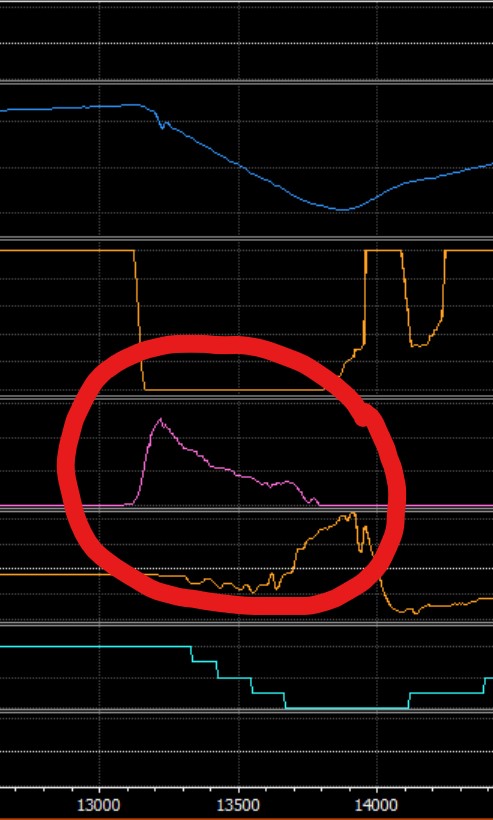
You can see brake pressure at its peak on the initial push, with a nice modulation and release all the way down to turn-in for the corner.
Trail Braking
Now, let’s get into what happens after you’ve finished your initial braking and reached the turn-in point.
Welcome to trail braking. This is a critical component to carrying entry speed into any kind of corner. Trail braking occurs as you slowly fade off the brake release as you’re turning the car into the corner, so you’re blending two inputs at the same time. Trail braking allows you to carry a higher entry speed, so there is still some braking left to be done as you’re turning in. It’s considered an advanced technique because you’re blending inputs at the same time.
The general rule of thumb with trail braking is that the decreasing brake pressure should only start from a 1 or 2 (on a scale of 10). Pressure on the pedal is extremely light. The slight brake input will to help the car rotate slightly, allowing the weight of the car to stay over the nose for a longer period. By having the weight over the front of the car, the steering tires have a larger contact patch for maximum grip and control. That allows the driver to carry more entry speed into the corner while braking and turning simultaneously.
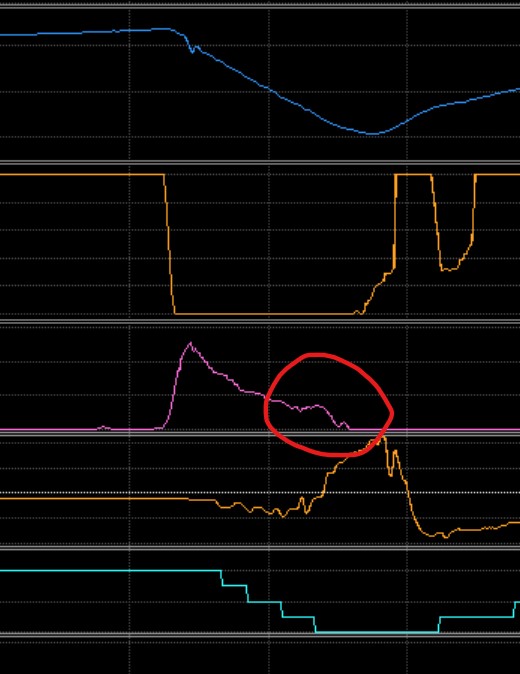
Note the progressive release of the brake smoothly as the steering is blended in at turn in. The key here is smoothness and finesse.
Braking for High-Speed Corners
Not all corners are created equal. Sometimes we are presented with high-speed corners that require just a brush of the brake and, maybe, a single downshift.
Sebring’s first turn is a great example of a high-speed corner where you barely touch the brake.
In the case of high-speed corners, it’s critical not to brake too heavily because you want to keep the cars platform more level. In other words, you want weight balanced over both the front and the rear, which will allow you to turn the car with more confidence. When you undergo heavy braking, the weight shifts to the front of the car, and consequently lightening the rear.
As I mentioned above, that transfer is a real bonus in tighter, slower corners. In high-speed corners, however, drastic weight transfer can result in an insecure, light feeling in the rear—not a good thing at high speed. By braking softly, you’ll feel like you have more security in the rear of the car.
The best way to achieve this balanced braking would be with a softer initial push of the brake pedal. Typically, in these types of corners, you will use no more than a 3 or 4 in pedal pressure. It’s vital not to over-brake. Lighter braking helps keep the speed up for the corner, and it helps keep the weight better distributed. It also allows the downshift—if required—to happen smoothly, and then you can start using some throttle to continue settling the rear end of the car through the high-speed corner (known as maintenance throttle). But we’ll save those throttle application discussions for another time!
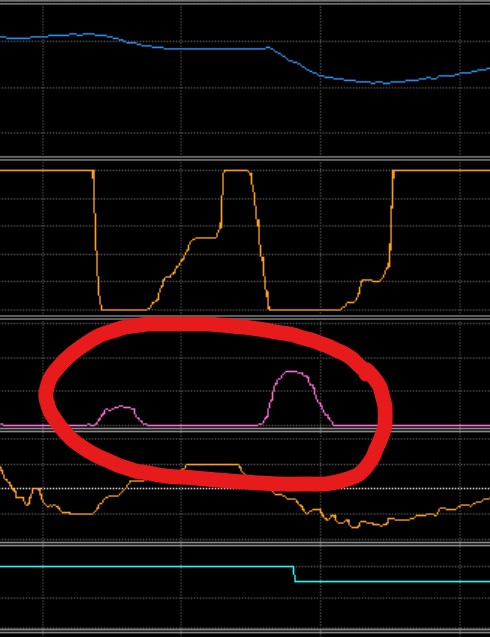
Note the smooth progression of brake application both on the tip-in and release of the pedal.
Now that you have some insight into various corner types and the braking techniques that go with each, I hope you can use it to improve your own braking techniques.
Start analyzing and optimizing your braking efficiency at a familiar track. There, you will be able to easily identify corners where you can practice these techniques. It’s a subject that is both fun and challenging, and braking is absolutely critical to advancing your skills on the track.
Tom Long is an accomplished sports car driver, coach, and development driver. With more than 150 professional starts, Tom has accrued over 20 wins and 40 podium finishes in IMSA/GrandAm competition. Last season, he drove in the IMSA Michelin Pilot Challenge Series GS GT4 class and the IMSA Lamborghini Super Trofeo Series. -ed

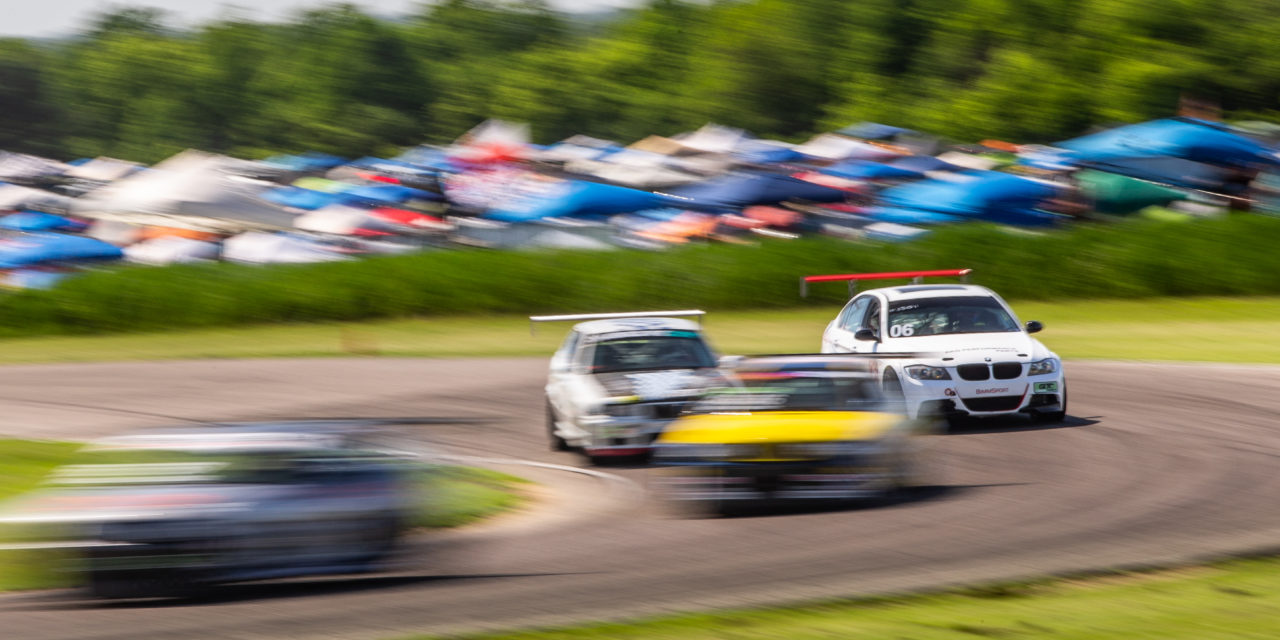
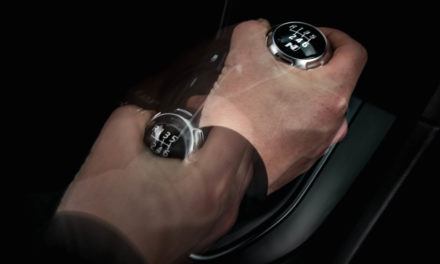
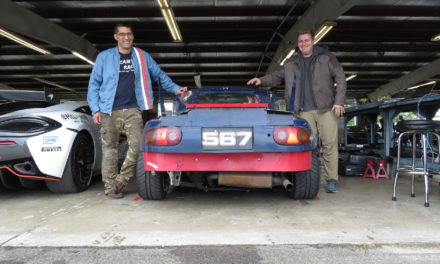
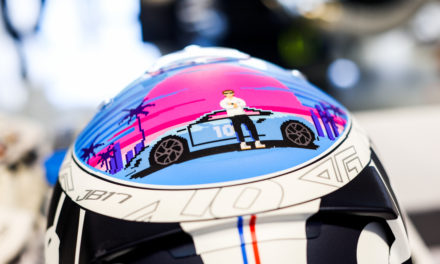






Excellent starter. Would also include that the act of turning the car itself induces some braking. To illustrate that point, push your car with the wheels pointed straight then push your car with the wheels turned. Not understanding and using that aspect frequently results in overbraking.
Someone please explain how stability control will apply a selected brake corner and not apply one of the others. Explain what sensors signal the computer to keep the vehicle stable. Also does trailbraking assist in rotation by having slight brake application ito the inside wheels as the vehicle is in the corner. Thanks
Having attended one of the local Porsche Club Track sessions @ High Plains Raceway, one of the first lessons of performance driving was “Only apply braking when the car is straight.” I had never heard of such a thing, but they really stressed it.